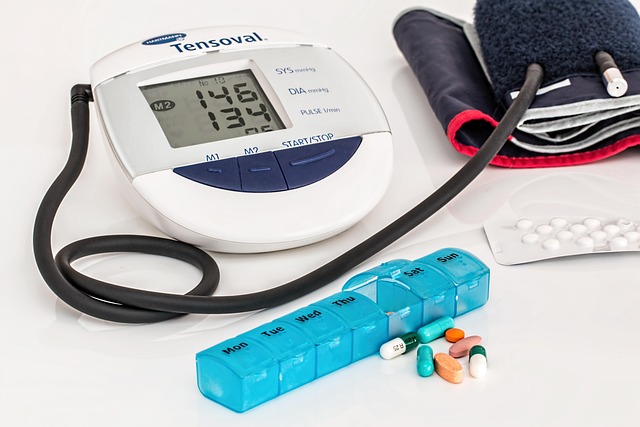Healthy eating doesn’t have to mean bland meals, rigid diets, or endless deprivation. In fact, the key to long-term success lies in making nutritious choices enjoyable, flexible, and sustainable. When healthy eating becomes a positive and engaging experience, it transforms from a chore into a lifestyle you can maintain for years to come. Below are practical strategies to make healthy eating both fun and sustainable, ensuring you stay motivated and nourished.
1. Focus on Flavor and Variety
One of the biggest misconceptions about healthy eating is that it’s boring or tasteless. The truth is, nutritious foods can be incredibly flavorful when prepared creatively.
a. Experiment with Spices and Herbs
- Add bold flavors using spices like turmeric, cumin, paprika, or cinnamon.
- Fresh herbs like basil, cilantro, and mint can elevate simple dishes like salads, soups, or roasted vegetables.
b. Try New Ingredients
- Explore exotic fruits, vegetables, or grains you’ve never tried before, such as dragon fruit, jicama, or farro.
- Incorporate plant-based proteins like lentils, chickpeas, or tofu for variety.
c. Mix Up Cuisines
- Cook meals inspired by global cuisines, such as Thai stir-fries, Mediterranean bowls, or Mexican-inspired tacos with lean proteins and veggies.
d. Combine Textures
- Pair crunchy elements (like nuts or seeds) with creamy textures (like avocado or Greek yogurt) to create satisfying contrasts.
2. Make Meal Prep an Adventure
Meal prepping doesn’t have to feel like a chore—it can be an opportunity to get creative and save time during busy weeks.
a. Batch Cook Staples
- Prepare versatile basics like quinoa, roasted sweet potatoes, or grilled chicken that can be mixed and matched throughout the week.
- Store ingredients in clear containers so you can easily see what’s available.
b. Create “Build-Your-Own” Meals
- Set up a taco bar, salad station, or Buddha bowl assembly line where everyone can customize their plates.
- This approach keeps meals exciting and encourages family participation.
c. Use Fun Tools
- Invest in colorful storage containers, spiralizers, or air fryers to make prep work more enjoyable.
- Label your meals with fun names (e.g., “Superhero Power Bowls” or “Veggie Fiesta Wraps”) to add a playful twist.
3. Involve Friends and Family
Sharing the experience of healthy eating with others makes it more enjoyable and fosters accountability.
a. Host Cooking Nights
- Invite friends over for a healthy cooking session where everyone contributes a dish.
- Swap recipes and tips while enjoying the meal together.
b. Start a Recipe Club
- Share favorite healthy recipes with a group of friends or coworkers each month.
- Challenge each other to try new dishes and discuss what worked well.
c. Cook with Kids
- Get children involved in meal planning and preparation. Let them pick out produce at the grocery store or help assemble snacks.
- Teaching kids about nutrition early on sets the foundation for lifelong healthy habits.
4. Embrace Small, Enjoyable Changes
Rather than overhauling your diet overnight, focus on small, incremental changes that feel manageable and rewarding.
a. Upgrade Snacks
- Swap chips for baked kale chips or popcorn seasoned with nutritional yeast.
- Replace sugary desserts with fresh fruit paired with dark chocolate or almond butter.
b. Sneak in Extra Veggies
- Add spinach to smoothies, zucchini to muffins, or cauliflower to mashed potatoes without sacrificing flavor.
- Over time, your palate will adapt to these healthier additions.
c. Practice Portion Control Creatively
- Use smaller plates to naturally reduce portion sizes without feeling deprived.
- Serve meals family-style to encourage mindful eating and prevent overeating.
5. Celebrate Progress, Not Perfection
Sustainable healthy eating is about balance, not perfection. Allowing yourself flexibility prevents burnout and guilt.
a. Follow the 80/20 Rule
- Aim to eat nutrient-dense foods 80% of the time, leaving room for occasional treats or indulgences.
- This approach reduces feelings of restriction and promotes long-term adherence.
b. Reward Non-Food Achievements
- Instead of celebrating milestones with dessert, treat yourself to non-food rewards like a massage, a new cookbook, or a workout class.
c. Avoid Labeling Foods as “Good” or “Bad”
- Reframe your mindset to view all foods neutrally. For example, instead of calling pizza “bad,” recognize it as a food to enjoy in moderation.
6. Gamify Your Healthy Eating Journey
Turning healthy eating into a game can make it more engaging and motivating.
a. Track Your Success
- Use apps or journals to log your meals and track progress toward goals like increasing vegetable intake or drinking more water.
- Seeing improvements over time boosts confidence and motivation.
b. Set Challenges
- Challenge yourself to try one new recipe or ingredient each week.
- Compete with friends to see who can drink the most water in a day.
c. Create a Vision Board
- Visualize your health goals by creating a board filled with images of vibrant meals, active lifestyles, and inspiring quotes.
- Place it somewhere visible to remind yourself why you’re prioritizing healthy eating.
7. Prioritize Convenience Without Sacrificing Nutrition
Healthy eating doesn’t have to be time-consuming. With a few smart strategies, you can streamline the process while still enjoying nutritious meals.
a. Stock Up on Quick Options
- Keep frozen vegetables, canned beans, and pre-washed greens on hand for easy meal assembly.
- Opt for no-cook options like overnight oats or grain salads.
b. Use Technology
- Order groceries online to avoid impulse buys and ensure you always have healthy staples at home.
- Try meal kit services that deliver pre-portioned ingredients and recipes.
c. Prep Grab-and-Go Snacks
- Slice fruits and veggies ahead of time and store them in single-serving containers.
- Make energy balls, trail mix, or yogurt parfaits for quick snacks on busy days.
8. Cultivate a Positive Relationship with Food
A sustainable approach to healthy eating starts with shifting your mindset around food.
a. Practice Mindful Eating
- Slow down and savor each bite, paying attention to flavors, textures, and sensations.
- This helps prevent overeating and enhances satisfaction.
b. Listen to Your Body
- Eat when you’re hungry and stop when you’re full, rather than adhering to strict rules or schedules.
- Trust your body’s signals to guide your choices.
c. Focus on How Food Makes You Feel
- Reflect on how different foods impact your energy levels, mood, and digestion.
- Choosing foods that make you feel good reinforces positive habits.









